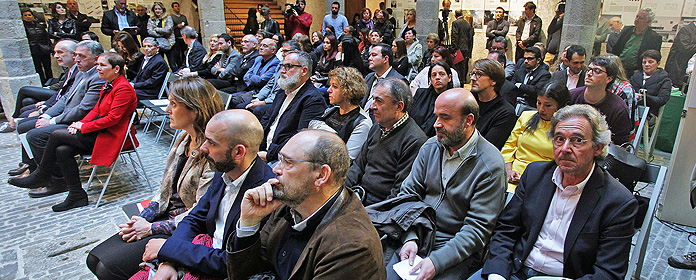2017_04_28_ARQ_biennial_arquitectura_Latin_American_architecture
"After the crisis, Europe must recover an architecture that responds more directly to human needs."
The architect José María Ezquiaga highlights at the University the example of Latin America in the development of an architecture in connection with the public space.

"In Europe, architecture has lost weight and has been almost reduced to emblematic or iconic architecture. Understanding its value in building community is a lesson we can learn from our Latin American colleagues". This was stated by architect José María Ezquiaga, on the occasion of his intervention in the V Biennial of Latin American Architecture at the University of Navarra, in which young professionals from seven countries are taking part.
The Dean of the high school Official Architects' Association of Madrid also highlighted the capacity of Latin American countries to achieve great effects with limited resources. "After the crisis, in Europe we must propose an architecture of the necessary, that responds more directly to human needs, that is 'tailored to man', not just to large-scale functions."
According to the expert, "the street and the place, which were in the DNA of European cities and also in the United States and Latin America, disappeared in favor of a grammar of urbanism where public space was relegated and prioritized the functional distribution of the city, detached from its interaction with the urban context". This occurred to a greater extent in America, where the training of the great megalopolises obeyed "to criteria of necessity and emergency, without planning in many cases". This was the case of Lima, Caracas, Bogota or the periphery of Buenos Aires. "Entire neighborhoods were built for low-income social groups with minimal urban quality and even serious infrastructure deficiencies".
In his opinion, in these megalopolises the global form of the city can no longer be rethought; the opportunity arises in medium-sized cities, such as Medellin or Barranquilla, where there is the possibility of avoiding these mistakes in urban planning, transportation, basic infrastructure. And thus, "there has been a recent movement of recovery of public space as the main argument to make a livable city".
Architecture as public space: the example of ColombiaJosé María Ezquiaga, whose lecture will focus on the Colombian experience, said that "throughout the second half of the 20th century, this country was, along with Argentina, Mexico and Chile, one of the most important for the quality of its architecture in the Latin American context. In this century, it has also made a great contribution in the field of urban architecture, especially in public space.
For this expert, "Colombia has understood that public space is one of the most important tools for building citizenship, a shared imaginary and a more cohesive society". In this sense, he referred to the policies developed, mainly in Medellin and Bogota, with a new vision of architecture marked by its urban commitment and an intimate relationship between public space and architecture.
The Biennial of Latin American Architecture of the University of Navarra was born in 2008 as an initiative of group of research AS20 of the University of Navarra. School of Architecture of the University of Navarra with the purpose to know and show the most recent and outstanding examples of the new Latin American architecture and to strengthen ties on both sides of the ocean.

